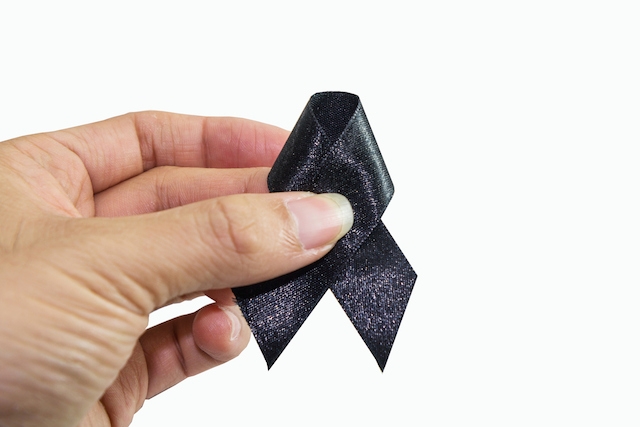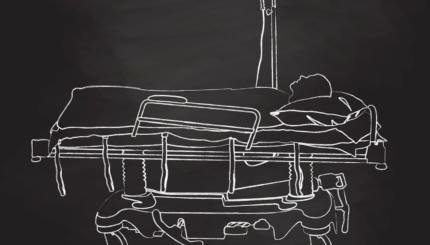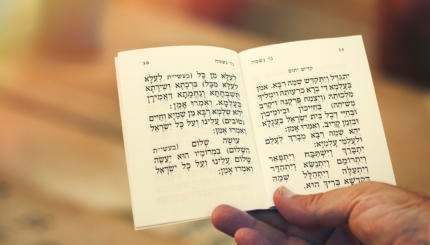The practice of tearing a garment as a tangible show of grief goes back to the Bible. There are numerous instances in the where people tear their clothes to show sorrow. is the graphic act manifesting the anguish one feels at the loss of life.
While many situations in earlier times warranted tearing, kriah today is done for the closest relatives for whom one mourns: parents, children, siblings, and spouse. One may also tear for other relatives.
Reasons to Practice Kriah
Rabbinic sources offer half a dozen possible reasons for the practice of kriah:
1. It deepens the sense of pain and sorrow.

Help us keep Jewish knowledge accessible to millions of people around the world.
Your donation to My Jewish Learning fuels endless journeys of Jewish discovery. With your help, My Jewish Learning can continue to provide nonstop opportunities for learning, connection and growth.
2. It confronts the individual with the recognition of the sanctity and importance of life at a time
of loss.
3. The loss of an article of clothing graphically symbolizes the personal sense of loss.
4. The cathartic process rids the heart of cruelty and anger by sensitizing it to loss, thereby
fostering return, reconciliation, and repentance.
5. Tearing the clothing is symbolic of the rending of the relationship between the deceased and
those still alive.
6. It serves as a substitute for or sublimation of ancient pagan self-mutilation rituals not
permitted in Jewish law.
Kriah is done on an article of clothing worn on or near the heart, such as a jacket, sweater, vest, shirt, blouse, bodice, or, minimally, a necktie or neck scarf. Rabbinic sources describe this as m’galeh et libo, revealing the heart. The tearing of a garment near the heart symbolizes the emotions felt in the heart at this time. The tear is made on the left side for parents and the right side for other relatives.
Obligations of Kriah
When mourning a parent, as opposed to other relatives, the obligation to tear always remains, even long after the initial mourning period has concluded. The explains this as a function of the duty to honor one’s parents, which continues after the death of the parent. But this raises questions in cases–more and more frequent–where the child feels no emotional bond with the parent. We might well ask if an abused child or one with large emotional distance from the parent still must tear. Halakhically [according to Jewish law], the answer is yes, because, at the very least, the biological bond has been severed. One acknowledges the fact that the deceased parent brought the survivor into the world, even if he or she did not fulfill the obligations of parenting.
The torn garment may be pasted or repaired after the mourning period, yet it will never look as it did before. This symbolizes that while life goes on, it can never be completely the same after the loss has occurred. In the case of the death of parents, it also connotes the fact that the mourner is no longer fully able to fulfill the mitzvah [commandment] of honoring them.
The Talmud states that the tear has to be done b’shaat himum, literally at a time of great emotional turmoil or pain. It can be argued that anytime one feels this way can be considered b’shaat himum. Our custom today is to tear at the time of greatest emotional feeling. Usually, this is just before the funeral service, though it is occasionally just afterward, or sometimes at the gravesite. After the initial shiva week of mourning is over, the garment need not be worn.
Dayan Ha-emet
Unlike most of the other mitzvot that come from the Torah or rabbinic tradition, kriah has no specific blessing recited over its performance. The rabbis were reluctant to attach a blessing to a seeming act of destruction, even one warranted by the Torah. However, there is a very important blessing associated with the grief period and, since medieval times, said before performing kriah. The blessing is Dayan Ha-emet: “Blessed are You, Lord our God, sovereign of the universe, the true judge.”
While this blessing is traditionally said any time one receives very bad news, it takes on special meaning here. It has been classically explained as the attempt to justify God’s actions, be they good or bad. This flows from the traditional belief, expressed in the Talmud, that “whatever God does is for the good.” Jewish life certainly affirms this as a general tenet, and some mourners are able to accept the idea. Yet it is not always satisfying. When deep grief and loss strike, one is not always ready to accept standard theological wisdom or dogma. However, the basic idea behind this blessing acknowledges God’s ultimate power over life and death.
During aninut, the period between the death and the burial, the mourner attempts to come to grips with the tragedy that has occurred. By referring to God as “the true judge,” the survivor is helped to recognize that death as well as life is part of God’s ultimate plan. Much of the funeral service moves the mourner to face the stark reality of what has occurred, and kriah is the first step.
Another explanation sees this blessing not as an affirmation of faith in the face of tragedy but rather as a goal toward which to work. The ultimate hope of consolation and healing involves the reaffirmation of faith, but this does not happen immediately. Rather, the mourner can view the blessing as an agenda, something for which to strive within the mourning and healing process.
Symbolic Substitutes for Kriah
There is no question that historically and halakhically, the tearing of clothing has been a significant part of the Jewish process of grieving. Unfortunately, too many modern Jews have shied away from this psychodrama of sorrow. Some reject kriah because they simply reject halakhic practice.
Others, more well meaning, desire to spare grieving family members a perceived “barbaric ritual.” Thus, the black ribbon was developed as a symbolic substitute for kriah. However, the black ribbon seems more an imitation of the non-Jewish custom of wearing a black armband as a sign of mourning. Most people I speak with believe for some reason that the ribbon must be worn for a full month, though there is no source in halakhah to indicate that a kriah garment is to be worn that long.
Symbolism of Kriah
Most importantly, the actual tearing done by the mourner addresses the emotions that all mourners endure. The pain and loss felt in the heart, the confrontation with the finality of death, and the cathartic ripping of the material–symbolizing the ripping of the relationship, never to be fully restored–are all deep emotional issues which simply cannot be addressed by a ribbon.
Indeed, the use of the ribbon may be part of the larger phenomenon in American culture of denying the finality of death and covering up its reality. Along with cosmetic tampering of the body and abandonment of the open grave before burial, these all avoid facing tragedy. But the healing process cannot begin until one has confronted the fact that loss has occurred. By acknowledging what has befallen through the ripping of clothing and God’s ultimate power over life and death through the berakhah [blessing] of Dayan Ha-emet, we begin this process as we address our deepest psychological needs as a mourner.
Reprinted with permission from Wrestling with the Angel: Jewish Insights on Death and Mourning, Jack Riemer ed. (published by Schocken Books).
Sign up for a Journey Through Grief & Mourning: Whether you have lost a loved one recently or just want to learn the basics of Jewish mourning rituals, this 8-part email series will guide you through everything you need to know and help you feel supported and comforted at a difficult time.
Looking for a way to say Mourner’s Kaddish in a minyan? My Jewish Learning’s daily online minyan gives mourners and others an opportunity to say Kaddish in community and learn from leading rabbis.



